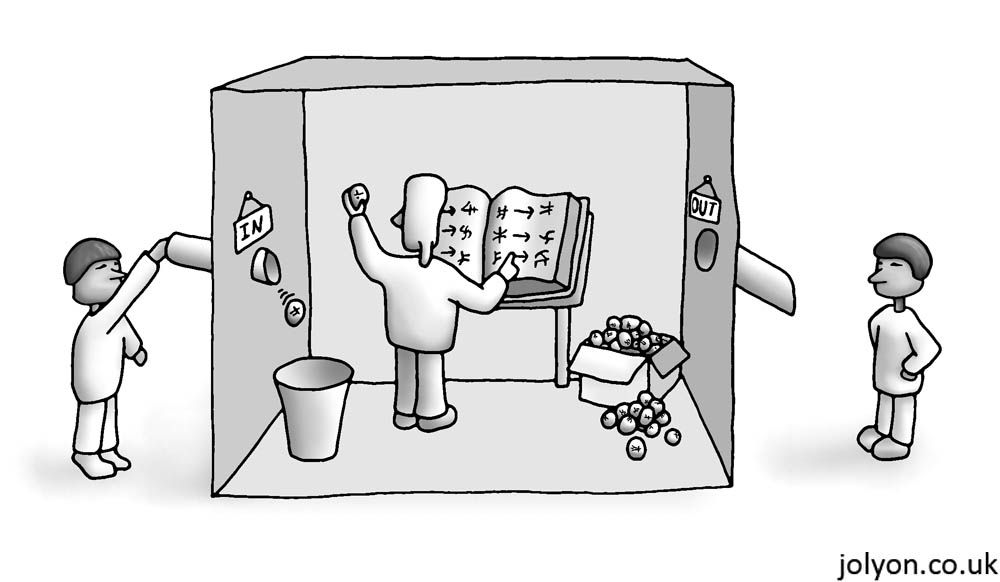The Chinese Room Experiment: Understanding the Limits of Artificial Intelligence
The Chinese Room Experiment, proposed by philosopher John Searle, challenges the notion of whether artificial intelligence (AI) systems can truly understand and possess consciousness. This thought experiment raises profound questions about the limits of AI and the nature of human understanding.

Table of Contents
- Introduction
- Understanding the Chinese Room Experiment
- Implications for Artificial Intelligence
- Challenges in Achieving True Understanding
- Addressing the Limits of Artificial Intelligence
- Conclusion
Introduction
The Chinese Room Experiment, proposed by philosopher John Searle, challenges the notion of whether artificial intelligence (AI) systems can truly understand and possess consciousness. This thought experiment raises profound questions about the limits of AI and the nature of human understanding. This article explores the Chinese Room Experiment and its implications for the field of artificial intelligence.
Understanding the Chinese Room Experiment
The Chinese Room Experiment presents a scenario where a person who does not understand Chinese is placed inside a room. The person is given a set of instructions in English to manipulate Chinese symbols based on the input received. From the outside, it appears as if the person understands and responds to Chinese queries, despite lacking comprehension of the language.
The experiment challenges the idea that a computer program, like the person in the room, can truly understand the meaning behind the symbols it manipulates. It suggests that even if an AI system can perform complex tasks and generate intelligent responses, it may lack genuine understanding or consciousness.
Implications for Artificial Intelligence
The Chinese Room Experiment has significant implications for the field of artificial intelligence:
Symbol Manipulation vs. Understanding: The experiment questions whether AI systems, which rely on symbol manipulation and algorithms, can genuinely understand the meaning behind the symbols they process. It suggests that intelligence and understanding are more than just rule-based computations.
Strong AI vs. Weak AI: The Chinese Room Experiment challenges the concept of strong AI, which posits that AI systems can possess human-like understanding and consciousness. Instead, it supports the idea of weak AI, where AI systems can simulate intelligent behavior without true understanding.
The Hard Problem of Consciousness: The experiment raises questions about the nature of consciousness and the "hard problem" of how subjective experiences arise from physical processes. It suggests that understanding consciousness may require more than just replicating intelligent behavior.
Challenges in Achieving True Understanding
The Chinese Room Experiment highlights several challenges in achieving true understanding in AI systems:
Context and Embodied Knowledge: Understanding often relies on context and embodied knowledge, which AI systems may struggle to replicate. AI systems lack the rich sensory experiences and real-world interactions that humans use to develop a deep understanding of the world.
Semantic Understanding: AI systems may struggle with semantic understanding, which involves grasping the meaning and nuances of concepts. True understanding requires more than just associating symbols with predefined patterns; it involves capturing the essence and context of information.
Subjective Experience: AI systems lack subjective experiences, emotions, and consciousness, which play essential roles in human understanding. These subjective aspects of cognition are challenging to replicate in AI systems.
Addressing the Limits of Artificial Intelligence
Addressing the limits of artificial intelligence requires a multi-faceted approach:
Enhancing Contextual Understanding: Advancements in natural language processing, machine learning, and knowledge representation can help AI systems better understand and process contextual information. This involves capturing semantic relationships, context-aware reasoning, and incorporating real-world knowledge.
Embodied AI and Sensorimotor Learning: Research in embodied AI focuses on giving AI systems sensorimotor capabilities to interact with the environment. By grounding AI systems in physical experiences, they can develop a more comprehensive understanding of the world.
Consciousness and Phenomenal Experience: While replicating human consciousness remains a significant challenge, exploring the relationship between neural processes and subjective experiences can contribute to a deeper understanding of consciousness. Research in cognitive neuroscience and philosophy of mind can inform the development of AI systems that mimic aspects of human consciousness.
Conclusion
The Chinese Room Experiment challenges the notion of whether AI systems can truly understand and possess consciousness. It highlights the limitations of symbol manipulation and algorithmic approaches in achieving genuine understanding. While addressing these limits is a complex task, advancements in contextual understanding, embodied AI, and consciousness research can contribute to bridging the gap between AI systems and human understanding. By continually exploring the boundaries of AI and consciousness, we can gain deeper insights into the nature of intelligence and pave the way for future advancements in artificial intelligence.



